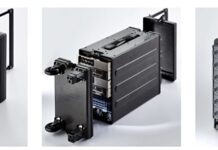VAST Data has added SMB support and replication in the V3 release of its Universal Storage array software.
Jeff Denworth, VP of products at VAST, claimed today: “Version 3 is the launch vehicle that brings Universal Storage to enterprises, government customers, and content organisations who have suffered under the weight of legacy storage and storage tiering.”
With Version 3, VAST has written its own SMB software stack so that Windows and MacOS applications can use VAST storage and have multi-protocol access between NFS and SMB. With the SMB server software a client fails over to another VAST server when the server they’re connected to fails.
VAST’s new Snap-to-Objects feature replicates a data snapshot to a second VAST array or on-premises S3 target system or to the public cloud for archiving. It also enables disaster recovery for file and object data in a VAST array.
The company now supports FIPS-class AES-256 encryption of data stored in its Optane and QC flash SSDs and has improved its data reduction efficiency. Denworth told us the new release kicks in another 25 per cent gain in dedupe efficiency on average, although there is variance between different types of data.
The upgrade includes enhanced user behaviour monitoring, performance improvements and management features.
The VAST Data hardware array uses QLC flash for bulk data storage, with added 3D XPoint media to boost metadata handling, deduplication and other management functions. The richly-funded startup announced the alleged disk drive array killer in February 2018.
DASEd but not confused
VAST’s disaggregated and shared-everything (DASE) architecture represents a generational change, according to Denworth, who explains his thinking in a company blog. If his assumptions are correct, the shared-nothing, Dell EMC Isilon-type architectures are toast. But don’t get out the butter and jam just yet. Generational changes take time to play out.







